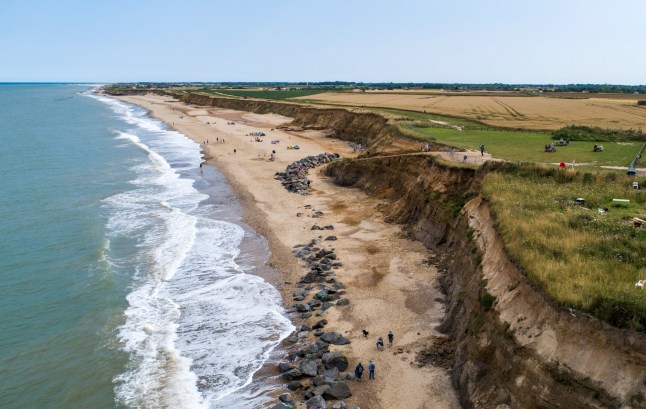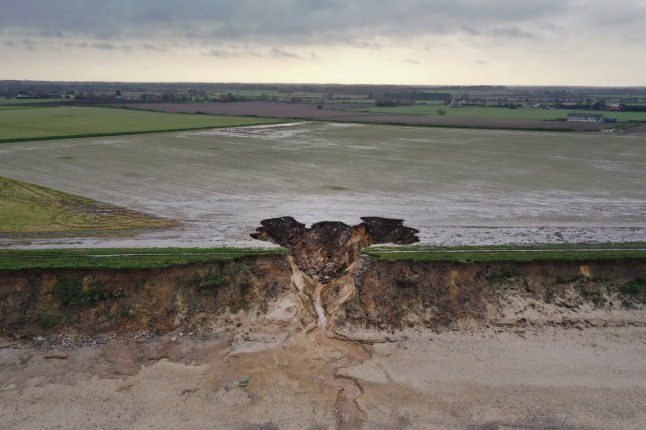
An 800,000 year old beach on the coast of Norfolk is at risk of vanishing into the sea amid accelerating coastal erosion.
Experts are predicting that Happisburgh – where around 1,400 people live – could be gone completely by 2050.
The popular seaside village has already lost over 250m of coastline since the 1990s.
Dr Ian Richards, a climate analyst and expert in UK coastal erosion, said the coastal erosion is already destroying the lives of some locals.

He added: ‘What is happening in places like Happisburgh is not just a prediction – it is a process that is already underway.
‘Homes have collapsed, roads have disappeared and the cliff line is retreating faster than anyone expected.’
The reason for the hasty coastal retreat is because the cliffs are made of boulder clay, which erodes very easily.
Norfolk sees erosion as high as 13 feet each year on some beach fronts, which has left more than 200 villages and towns in east England at risk.
Dr Richards explained: ‘Sea defences were built decades ago for a very different climate.

‘Now, they are no match for the pressure we’re seeing year after year. And places like Happisburgh are part of our cultural heritage.
‘We should visit, support the community, and learn from it – because once it’s gone, it’s gone.’
Happisburgh became a site of national archaeological importance when flint tools from 800,000 years ago were discovered there in 2010.
Two years later, early human footprints were uncovered on the beach.
They were at the time the earliest evidence of human footprints outside of Africa.
Now Happisburgh boasts a miles long coast which is popular with tourists, as well as the oldest working light on the Norfolk Coast.

Despite the coastal erosion, many are still optimistic about the beaches future.
Maria Jennings, a local B&B owner, says: ‘We know the risks, but we also know the beauty. People come here to relax, enjoy the beach and walk the coast.’
While one tourist, Emma Cartwright, 41 from Birmingham, said: ‘We come every summer. It’s beautiful and quiet – like stepping back in time.
‘You’re aware of the erosion but that makes you appreciate it more. We treat every trip like it might be the last.’
A number of coastlines in the UK are being battered by coastal erosion.
The Holderness Coastline, also made of boulder clay, is one of Europe’s fastest eroding coastlines.
It loses ground at a rate of around six feet per year.
While many cliffs in the UK are made of boulder clay, others are composed of less risky chalk, such as the Seven Sisters cliffs in Suffolk, as well as limestone, or sandstone.
Get in touch with our news team by emailing us at webnews@metro.co.uk.
For more stories like this, check our news page.


